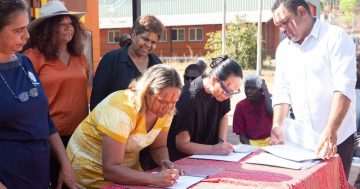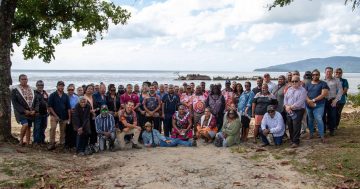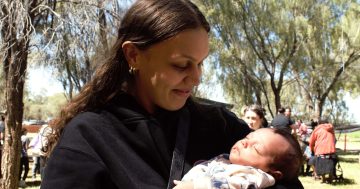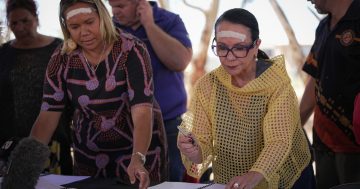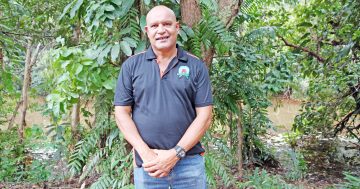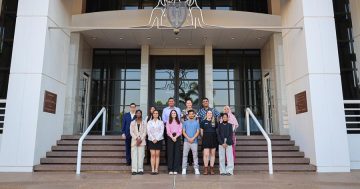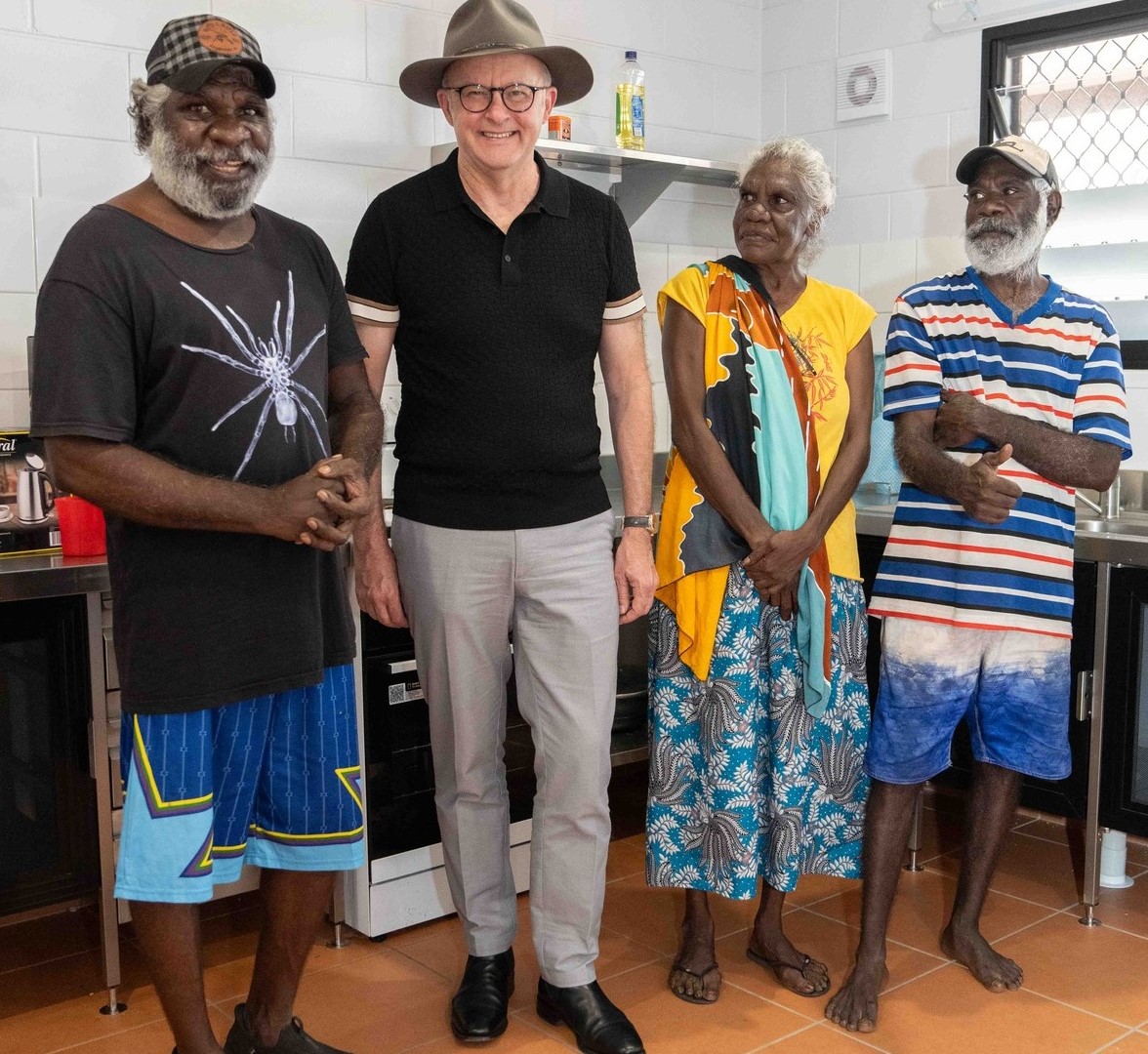
The Prime Minister made the announcement during a visit to the Binjari, a community near Katherine in the Northern Territory. Photo: Facebook/Anthony Albanese.
A landmark joint investment by the Federal and Northern Territory governments has committed them to building up to 270 homes every year for the coming decade with the goal of halving overcrowding.
On top of the $4 billion that will also go into support for repairs and maintenance, the Commonwealth will invest another $120 million over three years to match the NT’s own annual contribution to deliver housing improvements and essential remote infrastructure upgrades.
Prime Minister Anthony Albanese said the boost would help close the gap between Indigenous and non-Indigenous Australians, and tackle the region’s issue of having the nation’s highest levels of overcrowding.
Northern Territory Minister for Remote Housing and Homelands, Selena Uibo, said she was proud to see the government deliver this support in partnership with the Commonwealth Government.
“As the local member for one of the Territory’s most remote electorates, I have seen first-hand the impact of better housing for those who were living in chronically overcrowded homes with 20 or more people in one dwelling,” said Ms Uibo.
It’s been a priority for the Territory government over recent years, which between 2021-22 and 2022-23 saw an increase in Commonwealth funding of more than 200 per cent. It’s already met its 1950-bedroom target under the National Partnership for Remote Housing NT, and is comfortably on track to deliver 157 houses this year.
Last year the government initiated the Restoring Funding for NT Homelands agreement that invested in housing and essential infrastructure upgrades. It took an extra $100 million from the Commonwealth on top of the region’s annual $40 million contribution.
In conjunction with the investment, a Partnership Agreement will be signed between the Commonwealth, Territory Government and Aboriginal Housing NT – the region’s peak First Nations housing body set to receive an extra $1 million over the next two years in support of the project’s delivery.
The housing collaboration Wilya Janta (Standing Strong) welcomed the funding announcement, with CEO Dr Simon Quilty stating it was urgently needed to fix the longstanding remote housing crisis.
“The current model of community engagement in housing design is failing. Homes in remote communities are overcrowded and overheated, fuelling the social, health, and cultural inequities faced by Aboriginal communities,” said Dr Quilty. “While commendable, this funding will only make a difference if governments are genuinely committed to engaging with community and working on innovative solutions to housing design and evaluation.
“Building houses is one thing, building trust and community is another.”
Chair and Warumungu man, Jimmy Frank Jupurrurla, said that while the announcement was good and his people wanted to work with government, the new houses being built today were not designed for their culture or what’s expected for the climate in the next two decades.
“Governments focus too much on cost efficiency and doing things quickly, but in the long run, these houses are making our people sick; our wellbeing is forgotten,” said Mr Jupurrurla.
The organisation is working with community and industry to build community-designed homes in Tennant Creek, as a feasibility study for culturally appropriate and climate resilient housing as temperatures continue to rise.
Wilya Janta is looking for partnerships with government community housing providers to ensure broad adoption of its model for community directed housing design.


